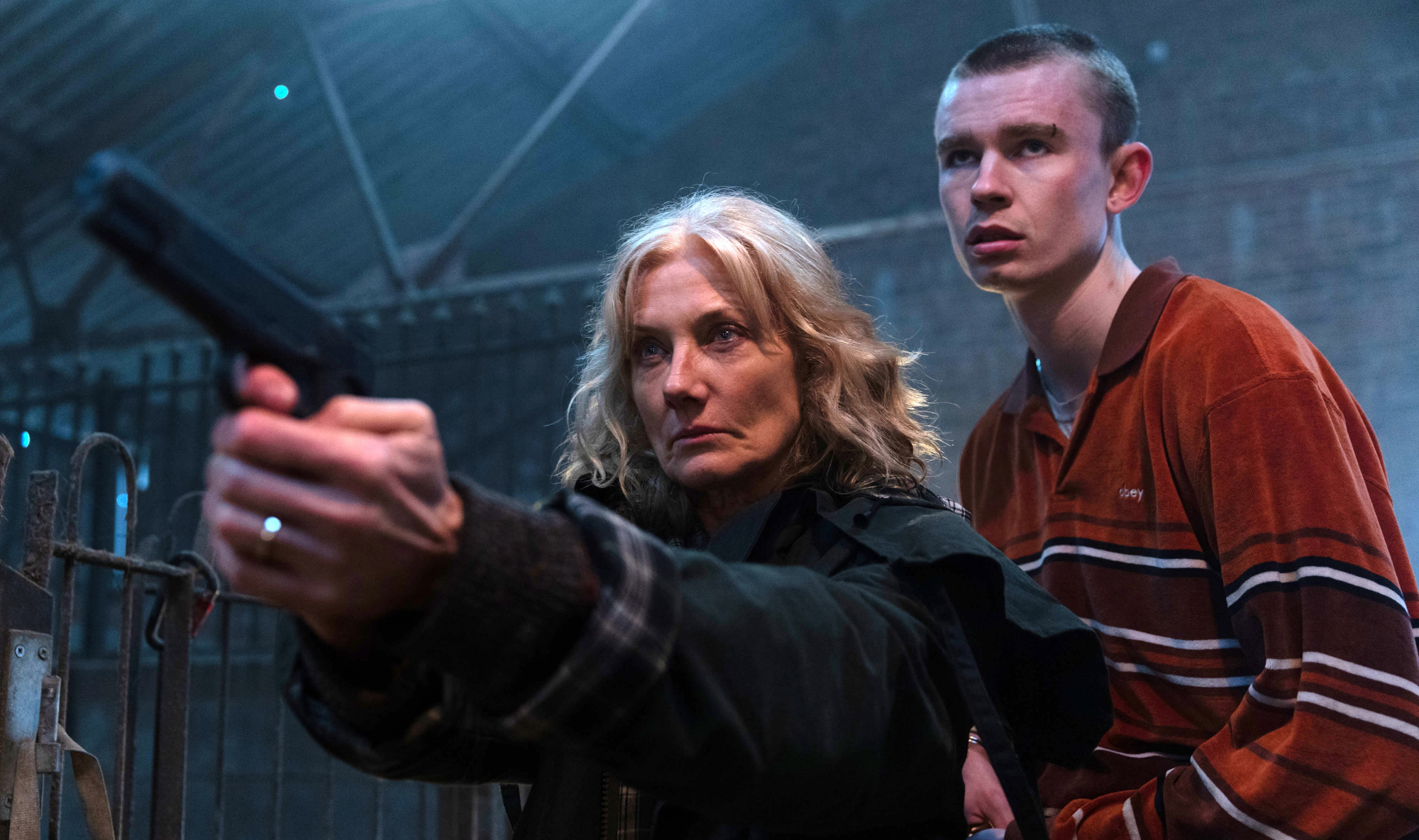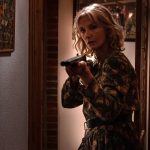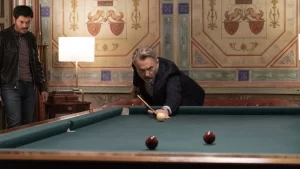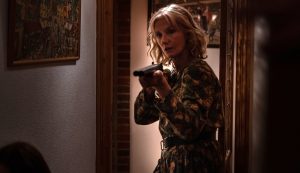With Cockneys vs Zombies and Warriors Gate firmly on his portfolio, director Matthias Hoene looked to create something that was much more confined and less of a genre crossover when compared to what had come prior. This creative approach led him to collaborate with Neil Linpow on a mystery horror output titled Little Bone Lodge! STARBURST talks with Matthias to reveal what he wanted to see from the movie, how he balanced the detailed backstories of each character on-screen, and much more!
STARBURST: How did you initially get involved with the world of Little Bone Lodge alongside Neil Linpow?
Matthias Hoene: We were working at the same company at the same time. I saw one of his shorts, and we were talking during lockdown about doing something together, maybe. Something that could be done on a small scale, and I was really interested in that because my first two movies have all been pretty much crazy, genre cross horrors, ensemble cast, there’s time travelling to ancient China. So I was really keen to make a very contained and character-driven film, so when Neil started speaking to me about it, I was like, “Yes, let’s do it, this sounds great!” this is kind of what I’d wanted to do for a while, and we started chatting about it, and it was a really good melding of minds.
Neil both acted in and wrote for Little Bone Lodge, so can you elaborate on how fun he was to work with and what you think this interesting dynamic between you two brings to the movie?
It’s very interesting. As an actor, he obviously acted it out in his head. He was so intimately involved in the writing, but then once we were on set, he was very much switching into total actor’s mode. It was an interesting dynamic. I liked that his acting background meant that the script was very character-driven and had a lot of depth, and he’ll put a lot of thought into it, but then also, he’d previously not got the roles that he had wanted, so he wanted to write a role for himself, and every time I talked to him, I could see like “Yes, you can do it, you’re perfect for this role”, and he really lived that character, and brought it to life. There was this dynamic on set where all of the actors were getting very method about being in character all of the time. So from Sadie Soverall, when she needed to cry, she was in tears all day, to Neil, who was in kind of angry, angsty character mode, he was like that on set, and Harry Cadby was the same. So it was a very interesting dynamic and time on set, and I really enjoyed it, because my previous films were quite light and frivolous if you like. So we got to delve into the darkness and intensity of the performances in Little Bone Lodge.
Joely Richardson has a ton of brilliant scenes in this movie, so I was wondering if you could tell us about what she was like to work with and maybe what you think she brings to the film.
To be honest, I was so ecstatic when she agreed to do the movie because I felt that, as a character and as an actor, she both has the strength and then the warmth and vulnerability that I wanted to bring out in a character. I wanted people to feel that even though she is the antagonist in the film, we can also really understand her motive, in a twisted sort of way, how the events in her life made her become this person who would do the things that she does. And I don’t want to give too much away, but like, I was really keen that we would build some sort of twisted empathy for her, in her strength, she was great for that, and also, when it came to actually acting the scenes, day to day, she’s an amazing professional. If there were scenes where she would have to shed a tear, on every take, at the same moment, a tear would roll down from her eye, and it was just astounding to watch. Working with her felt like this great collaboration where she was contributing every single time, always to make the film a better film. It was never about anything else. She jumped into this project, it’s a low-budget project, and she went all in just to become part of the team, and she dedicated herself to making the best possible movie.
The dynamic between Jack and Matty is intense! They are always on the edge with each other. How interesting was that for you to work on as a director, and how did you go about capturing their complicated relationship?
Well, I was really keen to get close to all of the characters, but those specifically. It was the first time that I shot with only one camera, which means that you can really get much tighter on eye lines, on the characters, to have the camera hovering right over their shoulder, looking straight into their eyes, and really capture that intensity of the performance. So that was really my approach. On set, it’s often an exchange of energies. If it’s a funny scene, you give fun energy, and if it’s an intense scene, you give intense energy, you don’t make any jokes. So I tried to create an environment on set where everybody could be completely in character, not be distracted, and give their best performances, get in really tight with the camera, and get it as raw and real as possible.
And you yourself grew up with two brothers, right!? So, how did your own life influence how you approached working on the movie?
My own upbringing was relatively a lot less complicated than the characters in the movie! All I can say is that as the youngest of three brothers, my older brothers always trumped over me in terms of strength, so the only way I could fight back was to learn the ways of the ninja and retaliate by using stealth and cunning. So that was my upbringing with my brothers. I felt, of course, when you grow up you learn about sibling rivalry. You learn about looking out for each other. But I’m going to say my own family upbringing was quite harmonious. Luckily! However, I have to credit my oldest brother for twisting my mind into the dark, weird places of horror that I’ve been going to because he used to hang out with one of his school mates, in a computer game, VHS video seller that they had, and I would discover films, like Tetsuo, Tetsuo II: Body Hammer, Evil Dead II. Those kinds of films. So I think that he is to credit for spinning me down this weird road.
When you look at the four key characters (Mama, Maisy, Jack, and Matty), they all have detailed and equally as important storylines. How crucial was it for you and Neil to have this level of backstories with your characters, and how did you yourself go about keeping them so well balanced on-screen?
We were really keen to make sure that every character has a lot of depth, an arc, and a story, and trying to balance the power plays between the two, and I think that’s something we talked a lot about in the script. To make sure that the character’s backstory is, whatever crazy thing that they do, they kill someone, all of the other dark things that happen, there’s always a really good reason for why they do it. So in a way, even though the film is really dark and twisted, I didn’t go to a territory which I think is closest to my idea of hell, I didn’t show any character that is so devious and twisted that you can’t understand why they’re doing it. So I kind of held back on going that far. When it comes to balancing the characters, making a movie is like cooking a good meal sometimes. You have to get the ingredients in place. You have to make sure that there’s not too many of each, and get the spice right, and try to get the balance right, and the dynamic to keep it interesting, that you keep revealing new answers of each character as the story goes along to keep the viewer interested in guessing what is going to happen. Tracking that through is the job of the director. Making sure that the arcs are revealed at the right moment. The emotion of each character comes out. The subtext shines through, not too obviously, but in the details of each performance. To be honest, it was working with Neil, Harry, Sadie, Joely, they’re all such great actors. They made it easy for me as well.
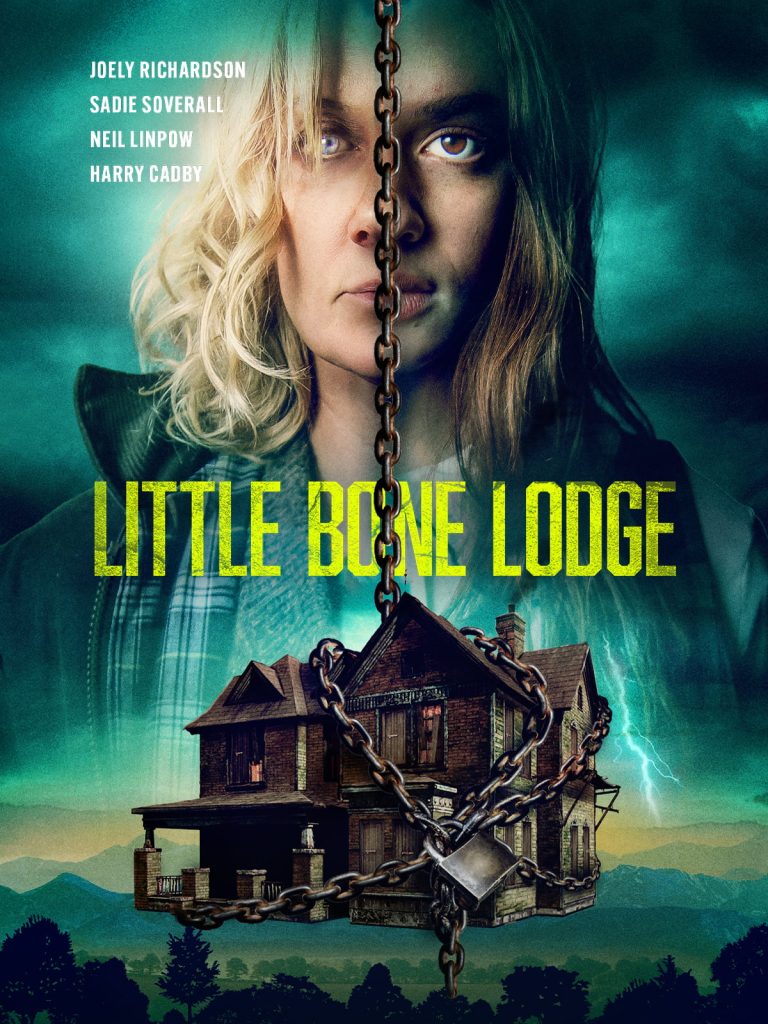
There’s a game-changer scene in the movie when the cop (PC Adams) turns up. It was really intense to watch. So I did want to ask, how fun was that scene in particular for you to work on, and what was it like to put together!?
It was interesting to create the right balance of how suspicious and not suspicious the cop is, building the timings of when we reveal “Hmm, something’s going on!?” along with the storm outside, then the nonverbal performance from Pa (Roger Ajogbe), who had a difficult job, needing to convey a lot of information with just his eyes, or a tiny grunt. Without again being too over the top or keeping it very subtle. Putting it together was great, because editing scenes like that are fun because you can cut between the looks, and the fear of Mama, that she’ll be revealed or found out, and how she tries to manoeuvre against him, trying to get him out of it. Obviously, we have Jack in the cupboard with his gun, making sure nothing happens. Then Matty and Maisy hid in the other room. So, I love those scenes where you have lots of different elements. You play with the characters all knowing what’s going on, or most of them, and one being clueless in this lion’s den. It was fun.
Leading on from that, can you tell us more about where the movie was filmed and what you think the isolation of the Scottish Highlands bring to the movie?
Because it’s an indie movie, we found a house quite close to London; it was this Farm House which was in the family’s hands. Actually, the grandparents of the grandchildren that had lived in that house, when they passed away they decided to keep the house as it is and rent it out to movies, so we were really lucky to have this interesting feeling, a grand house that we could use, and stage all of the action in, because it is really a character in the story, especially, it’s a hallway movie, as that hallway is always kind of the key point, where many of the key scenes happen, but also like the creaking hallways, the feeling of the storm pounding the house, and then the feeling of the highlands inspiring to really rattle and shake the characters. We had a lot of conversations about how and when the storm would climax because doing rain machines is not the easiest and cheapest thing to do in a movie when you’re on an indie budget. So making those landscape shots, the sort of mythic landscape of Scotland, part of the texture of the film was something that I was super keen on. I actually ended up going to Scotland on my own, with a drone and a small camera to shoot those pick-up shots, because I wanted to get up at 4am in the morning, get sunrise, then stay up until sunset, and get those shots in the best light. And travelling into the middle of nowhere, we were in Glencoe, and then I travelled up to the Isle of Skye to Neist Point Lighthouse. For me, it was a really amazing experience to connect with Scotland in that way. It was kind of all on my own, just capturing these rugged mountains and empty roads, moody landscapes. We did want to shoot all of it in Scotland, but for logistical reasons, we just couldn’t make it work. Next time with the James Bond budget! Even they didn’t shoot in Scotland, to be fair, on Skyfall, only the pick-ups. The main shots were somewhere else. The house is in the middle of the Scottish highlands. You always try to find those pressure-pot situations where you can throw characters together, and they just have no way of escaping, and they have to work out all of the secrets with pain and revelation.
You also loved the idea of ‘“wrong-footing the audience’ so that they never knew what was coming with the plot! How did you go about achieving that sort of unpredictable approach alongside Neil, and just how fun was it to work on those twists and turns?
For me, it was key to not just make a good home invasion movie. I felt like I really wanted to take the viewer somewhere they didn’t see coming. I tried to do that with my first movie, which was a horror comedy, but also just, I think, takes you on a journey you really don’t expect. I’m always trying to find that sort of thing. When it comes to working on the twists and turns, I’m going to credit Neil on a lot of those sorts of amazing character revelations. There’s that scene between him and his brother where all the truth about their mother and the lies around her come out, what she felt about them, and how Jack feels about Matty. That was always a pivotal scene. It’s such an exciting scene in the movie. It’s one of my favourite scenes in the movie because it’s just two people talking, opening up their hearts and their fears to each other; that’s great writing and great acting there. So I’m going to credit Neil for all of that. It was a good collaboration. It was interesting because it was Neil’s first feature film script, and he really knocked it out of the park. So, I credit him.
Finally, why should STARBURST readers check out Little Bone Lodge?
If you love dark thrillers, and if you like to look into the deepest, darkest depth of the human psyche and go to places as depraved and as twisted as you can maybe not imagine, this is a film that takes you there. In the tradition of films like Straw Dogs, or Dead Man’s Shoes, Misery, it’s a film that hopefully hooks you from minute one and keeps you guessing, keeps you involved until the very end. I think there’s humanity to every single character, whether that’s twisted or straight up. I was trying to create characters that would really get you involved, ask you questions about yourself, and ask you, “What if my life would have gone wrong?” or “What if my life could have gone differently? I could have ended up exactly like those characters!” and I think that’s really interesting territory to go on. It’s moody, it’s cool, it’s dark, and I think you’ll have a great time watching it. What’s interesting for me is I have a really dark side and a really light and fun side, and often I bring both together. Cockneys vs Zombies has a lot of heart, and it’s really dark at the same time and goes there, my second movie, The Warriors Gate, brings out the lighter side. This time, I was like, “I don’t want to do a genre crossover; I want to do a straight-up, dark, twisted thriller!” and I feel like this is the pendulum that’s swinging back and forth in my heart, and in my work. So that’s how I felt about making the movie.
Brilliant, we’re excited to see what you work on next!
Yes! I’ve got a bunch of projects in packaging so to speak. I don’t want to jinx any of them, but it always is about which one gets the right actor, and then I’m also doing a few TV things, so fingers crossed. I’m excited about what’s next.
Little Bone Lodge is available on digital from May 22nd. You can read our interview with writer/actor Neil Linpow here.

